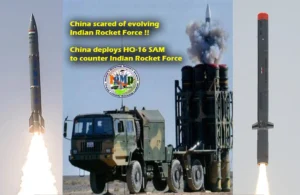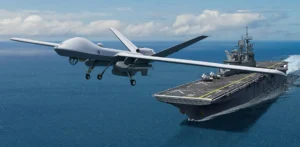Source : Indian Defence News
 |
| Representative Image |
With disengagement taking place at all friction points and de-escalation by armed forces of India and China in eastern Ladakh progressing, the government has issued several requests for proposal within a week to procure over 2000 drones, including those for Remotely Piloted Aerial Vehicles (RPAV) along with complete accessories.
A total of five RFPs were issued in a week’s time. All these surveillance drones and RPAVs are being procured through the fast-track procedure under emergency procurement to be deployed along the northern borders with China.
Experts believe that they would enhance the operational preparedness of the force and act as a force multiplier. They also believed that the future of warfare would be tech-driven, and therefore, it is imperative to procure drone-like systems.
Former Indian Army officer and defence expert Lt Gen VK Chaturvedi (Retd) said: “Drones are very important, both as weapon systems and surveillance or intelligence-gathering purposes. They can do a lot of work and tasks. It is the future of warfare. Drones have a very effective role to play in offensive (pin-point target) and surveillance gatherings.”
“These drones will be deployed along the LAC in the northern borders for surveillance purposes, to keep a tab on enemy activities, like construction, border infrastructure development, mobilization, among other things.”
RPAVs For Special Forces
On October 25, the government issued RFP for 750 RPAVs to be deployed with the Indian Army’s Parachute (Special Forces) Battalions as they are mandated to execute special missions behind enemy lines.
‘The Parachute Battalions should be equipped with state-of-the-art equipment. The current volatile situation along Northern orders warrants expeditious procurement of operational equipment. RPAV is a potent situational awareness device which provides surveillance by day and night along with the ability to scan the target area and provide a processed 3D scanned image of the target to execute special missions,’ the RFP reads.
The device will be employed for situational awareness, short-range surveillance, scanning the target area and providing processed 3D images of the target before entering the target area. This force multiplier would enable the Special Forces to execute pinpoint precision strikes during direct action tasks.
Other Recent Requests For Proposals
Prior to this, on October 20, an RFP for 80 mini Remotely Piloted Aerial Systems (RPAS) was issued. The RPAS can be used for tactical surveillance to locate adversary troops, equipment, and weapon systems in a particular sector.
The new smaller RPAS, with a mission range of 15 km, is needed by artillery units for over-the-hill tactical surveillance in high-altitude areas. The Army can go for procurement in large numbers if they perform well.
Besides, the Army is also seeking 1,000 surveillance copters to be operated in the Himalayas and provide a live feed to the battle commanders. All these UAVs and RPAVs will be sourced from Indian companies.
The copters will provide aerial and sustained point surveillance capability to the Army. It will have a multi-sensor system to carry out real-time reconnaissance and surveillance of an area of interest.
Earlier last week, the Army issued two requests for proposals to procure 363 drones in keeping with its commitment to fight future wars with indigenous solutions. These include 163 drones to be operable at the high altitude, while the remaining 200 will be for medium altitudes with accessories. One of the criteria that have been mandated by the Army is the availability of 60 per cent of indigenous content.





